Faculty and students find low cost, versatility in open educational resources
By Emily McConville — Published on October 24, 2019
Kirk Read’s oral French course has long had a theatrical flair.
To teach lessons in vocabulary, grammar, and francophone culture, the professor of French and francophone studies conjured the fictitious Marie Malika d’Alger and created an episodic play, in French, about her life and adventures as a young Franco-Algerian woman.
For more than 20 years, Read gave the scripts to his students in hard copy. The students would learn the lines, create their own additions to the protagonist’s life and times, and take quizzes and tests that Read administered.
This year saw a change in the presentation of Read’s course. With support from the college’s Information and Library Services department, Read and a group of students spent last Short Term turning Marie Malika d’Alger into what’s known as an open educational resource (OER) — specifically, a website that anyone at Bates and beyond can use freely.
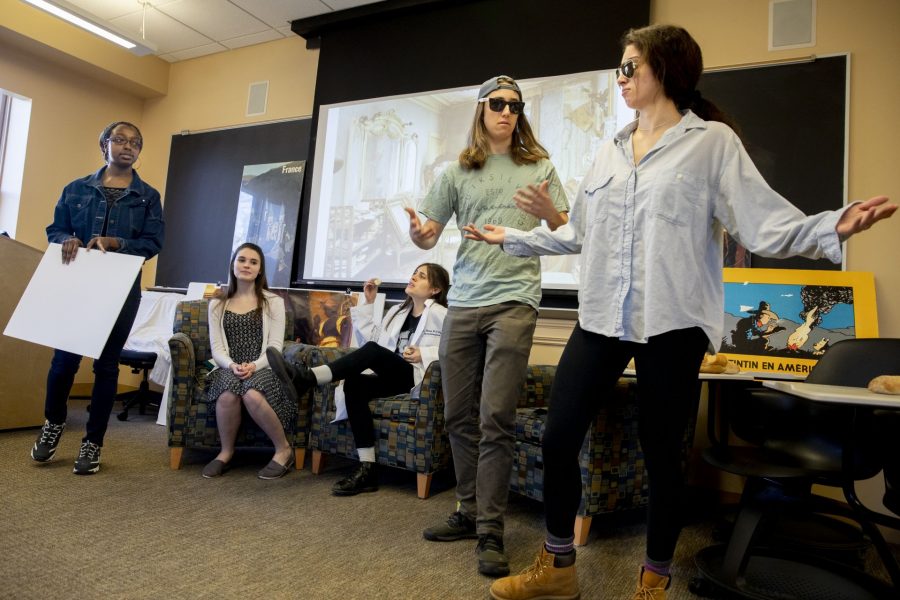
Read and his students are perhaps the most, ahem, dramatic example of efforts at Bates to use advances in information technology to make course materials cheaper, more accessible, and more versatile.
Key to the college’s growing success in adopting OERs — or, more broadly, less-expensive course materials — is creating new partnerships across campus. To that end, Bates librarians reach out to individual faculty members, and professors know that they can come to the library with their own ideas. Meanwhile, staff at the College Store review course materials and reach out to professors if there are cheaper options available.
“We’re actively looking for the courses where the textbooks are really expensive, or those courses that have a very high enrollment even if the textbook isn’t that expensive,” says Pat Schoknecht, vice president of Information and Library Services and college librarian. “When we find them, we will go in and actively talk to the faculty member” about alternatives.
That could mean using an open educational resource, or OER, strictly defined as a material whose components are in the public domain and are free and open for anyone to use. It could also mean using an ebook or journal that the library licenses, or simply a less expensive textbook.
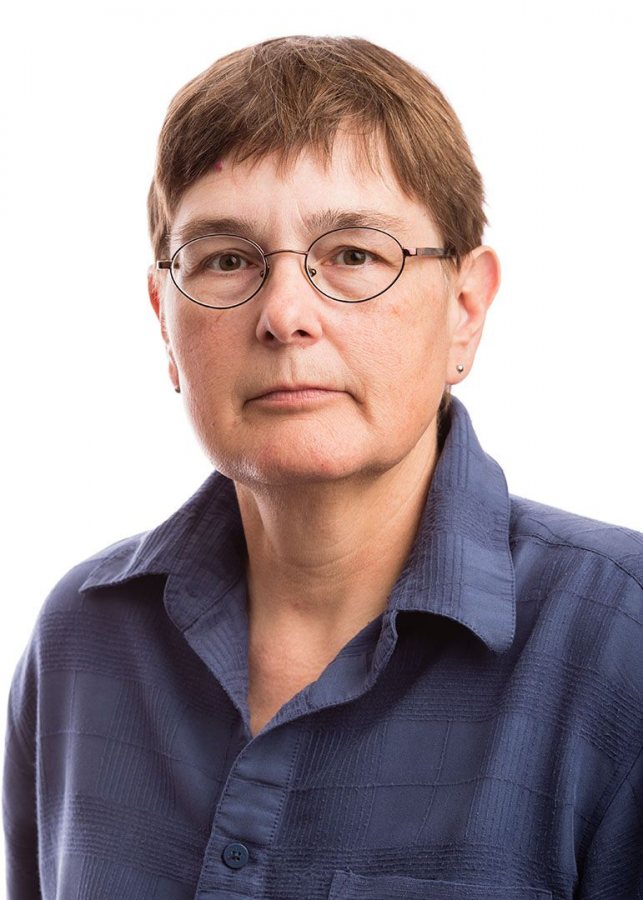
Recently, the library received a grant from the Davis Educational Foundation to join the Open Textbook Network and provide mini-grants to Bates faculty who review, use, or implement open access materials.
Long an economic challenge for students, required course materials — whether a copy of the Norton Anthology of American Literature ($50.65, used) for an English course or much more expensive textbooks in STEM disciplines or foreign languages complete with a code for online assignments — can run into the hundreds of dollars, potentially shutting students out of certain courses and majors.
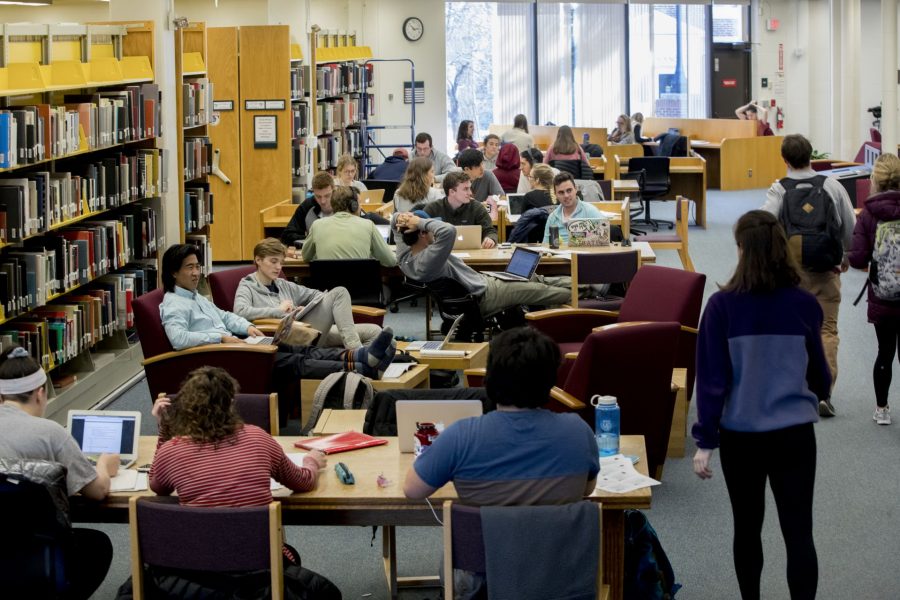
In response, Bates has tried to make those costly materials available through Ladd Library: Since 2013, the library has kept a copy of every required course material on reserve, one of the few such programs of its kind. In addition, other campus offices, including the Office of Intercultural Education, maintain collections of frequently needed course materials.
What’s different now is that technology and the availability of OERs have caught up to the need.
“The resources and platforms have been upgraded to a point where they’re actually really good,” says Krystie Wilfong, an associate college librarian who works to gather and share open access materials. “The content the faculty needs is there, because a faculty from a different institution has written something they can then adopt.”
In 2011, the price of a book that Associate Professor of Mathematics Meredith Greer uses for her differential equations course rose “precipitously,” she said.
“It really helped to make the point clear in a way that I couldn’t ignore, and students let me know that that was a problem.”
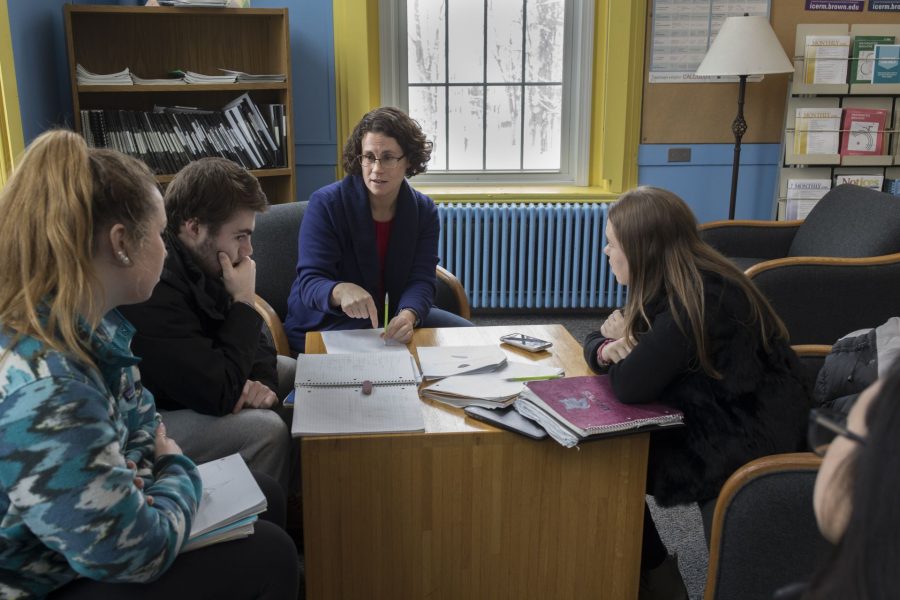
Greer found a cheaper textbook for that course, but the episode prompted her to try to minimize costs across all her classes. She took materials she had already created for graduate-level courses and adapted them for Bates juniors, and she pored over listservs and online repositories for math assignments.
For her multivariable calculus courses, she used free online materials by MIT mathematician Gilbert Strang, and Calculus I and II courses across the department transitioned to an online textbook called Active Calculus this year.
Along with Kirk Read and Associate Professor of Digital and Computational Studies Carrie Diaz Eaton, Greer shared her story at an April symposium on open educational resources, organized by ILS, supported by the Dean of the Faculty’s office and the Davis Educational Foundation, and attracting librarians, booksellers, and informational technologists from 22 institutions in New England.
After assigning Strang’s material for several semesters, Greer surveyed the students who had used the online textbook and presented her findings to the attendees. Using the website had its drawbacks — students had to get used to navigating sections online as opposed to turning the pages of a book and writing notes in the margins — but they enjoyed the low cost, versatility, and accessibility.
Indeed, finding and using OERs benefits students in at least two ways: reduced cost and, in some cases, improved teaching.
In 2013, then a professor at Maine’s Unity College, Diaz Eaton was seeking resources to teach quantitative biology, an emerging and growing field that incorporates math and computer science. Colleges and universities were trying to develop new educational materials on the fly — but the experts from school to school weren’t necessarily talking to each other.
“People were reinventing the wheel at multiple institutions,” Diaz Eaton says.
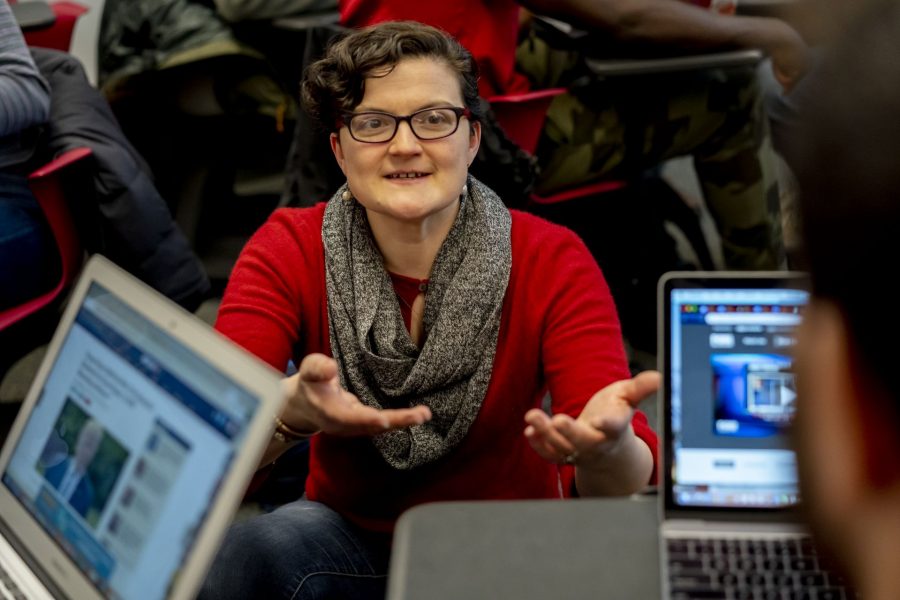
So Diaz Eaton and her colleagues created QUBES, a hub for lesson plans and modules that faculty at any institution could use in their courses. The modules range from an exercise on the evolution of frogs to an assignment to design the food supply on a hypothetical Mars colony. QUBES works with more than 75 faculty and institutional partners.
Now, at Bates, Diaz Eaton is continuing her work with QUBES; this month she organized a conference on making open access to biology education sustainable. She and her DCS colleagues are also working to incorporate open access into the structure of the nascent program. She makes sure to use free software to teach programming and involves students in designing her courses.
“We’re thinking about open access as being more than just digital access, but also access into DCS itself,” she says.
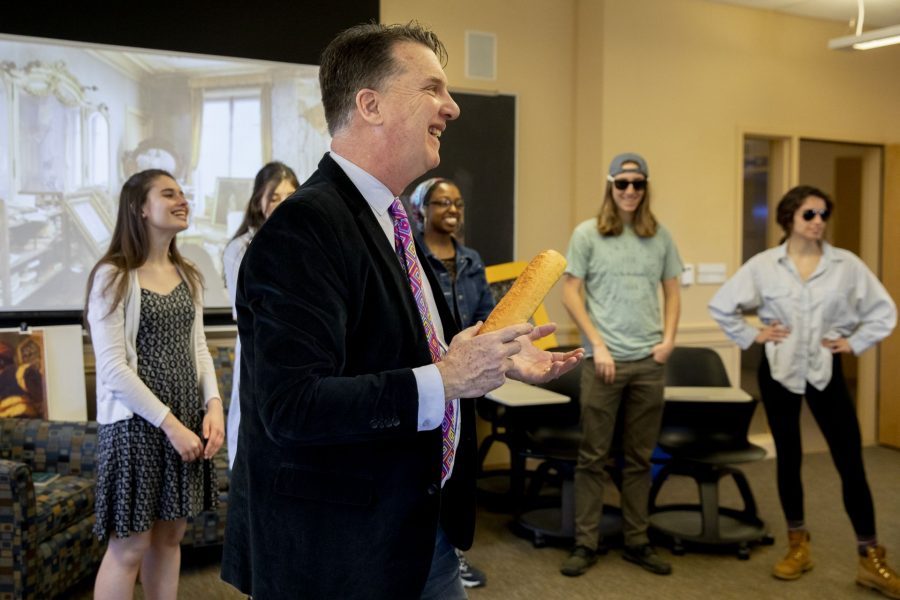
The Bates students who helped Kirk Read redesign his oral French course last May felt similarly empowered. They were quick to grasp the benefits of OER, as well as some of its challenges, like how to compensate or reward scholars who invest time and talent to create the materials.
Now well into the first semester of the redesigned oral French course, Read and his students are liking the online version of Marie Malika d’Alger. Lessons and scripts are clearly organized, each image is licensed or copyright-free, and Read and his students thought through issues like how best to give assessments through the site and how to make the site accessible to users with disabilities.
And if a problem crops up during the course, Read can change the site on the fly. The course website is designed to be usable by anyone and everyone with some knowledge of French, and he plans to open it to outside users within the next year.
“The students get to own this text more than anything else,” Read says. “It’s online. I can upload a different PDF or talk about things they like better than what I propose. They’re not spending a dime for this, and it’s attractive and interactive. I’m totally happy with it.”